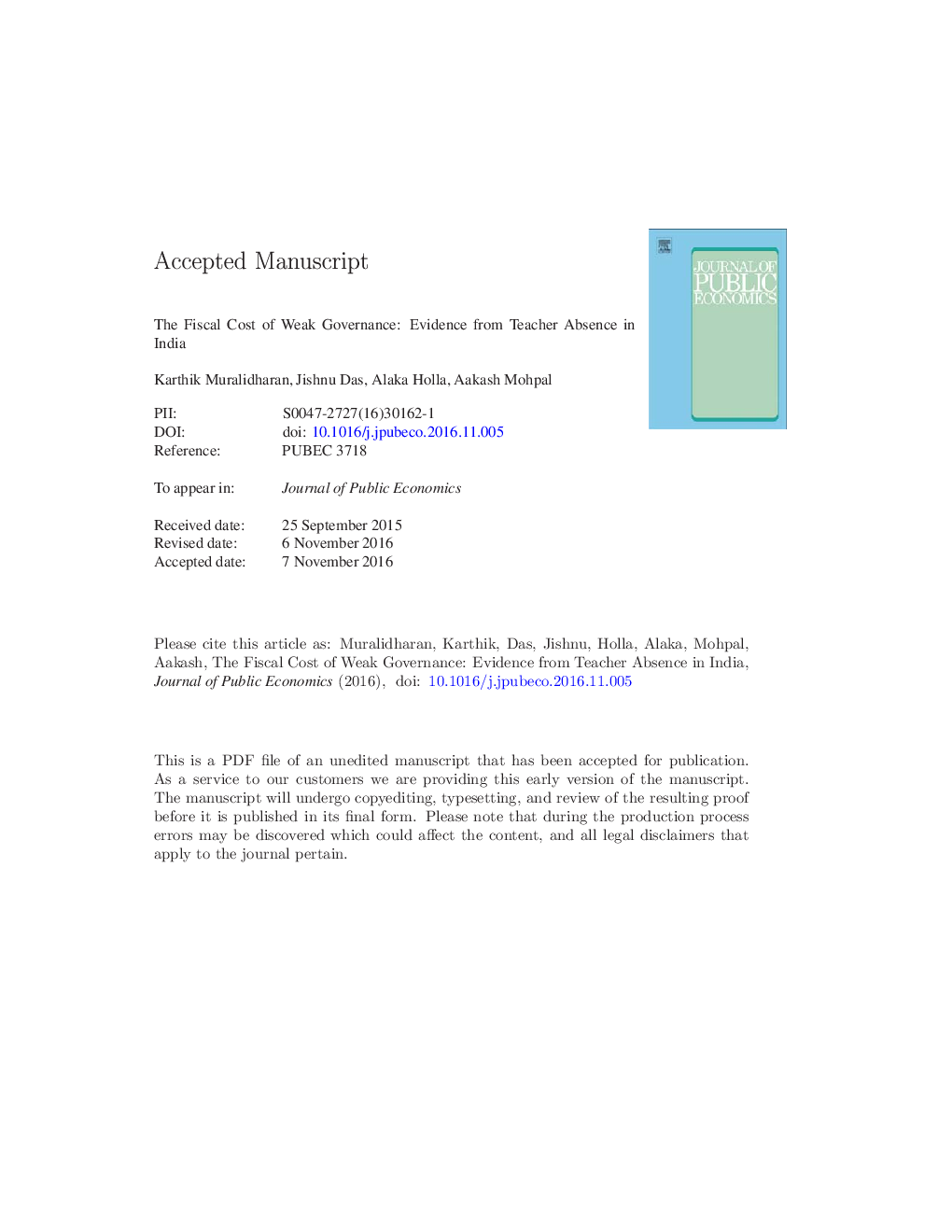| Article ID | Journal | Published Year | Pages | File Type |
|---|---|---|---|---|
| 5101830 | Journal of Public Economics | 2017 | 59 Pages |
Abstract
The relative return to strategies that augment inputs versus those that reduce inefficiencies remains a key open question for education policy in low-income countries. Using a new nationally-representative panel dataset of schools across 1297 villages in India, we show that the large public investments in education over the past decade have led to substantial improvements in input-based measures of school quality, but only a modest reduction in inefficiency as measured by teacher absence. In our data, 23.6% of teachers were absent during unannounced school visits, and we estimate that the salary cost of unauthorized teacher absence is $1.5Â billion/year. We find two robust correlations in the nationally-representative panel data that corroborate findings from smaller-scale experiments. First, reductions in student-teacher ratios are correlated with increased teacher absence. Second, increases in the frequency of school monitoring are strongly correlated with lower teacher absence. Using these results, we show that reducing inefficiencies by increasing the frequency of monitoring could be over ten times more cost effective at increasing the effective student-teacher ratio than hiring more teachers. Thus, policies that decrease the inefficiency of public education spending are likely to yield substantially higher marginal returns than those that augment inputs.
Related Topics
Social Sciences and Humanities
Economics, Econometrics and Finance
Economics and Econometrics
Authors
Karthik Muralidharan, Jishnu Das, Alaka Holla, Aakash Mohpal,
